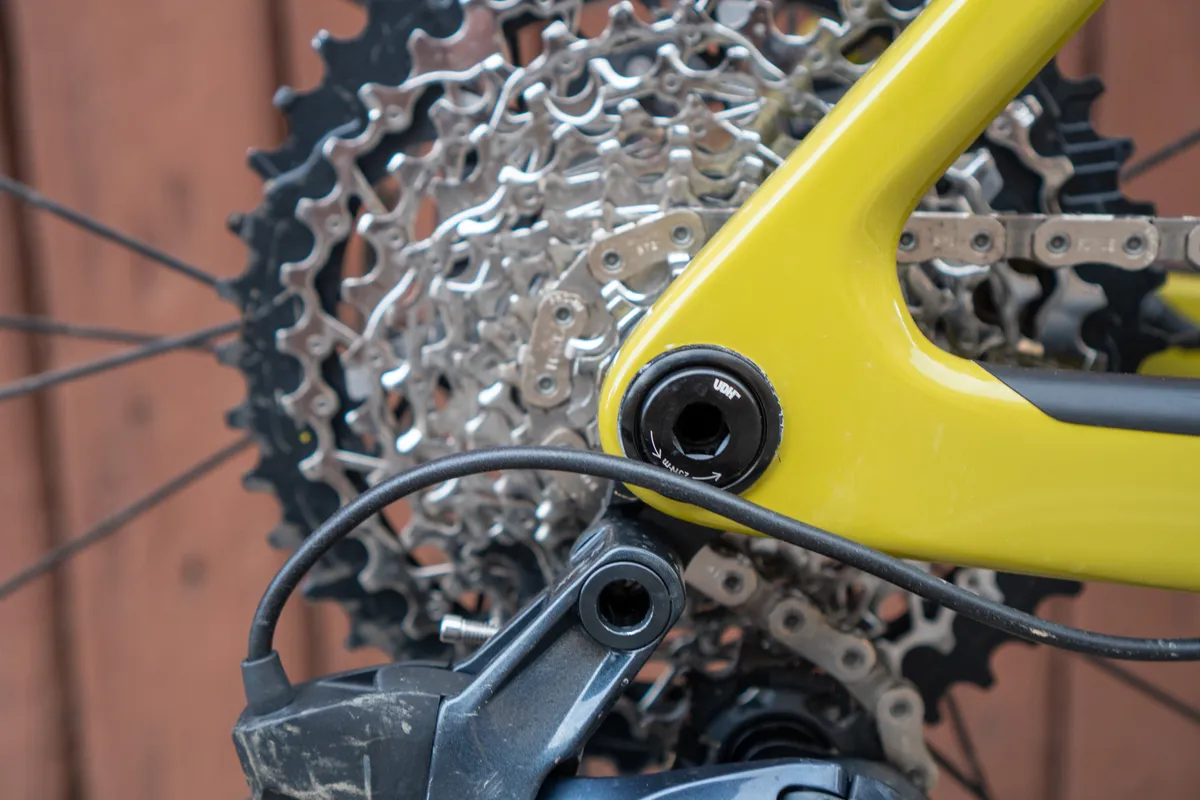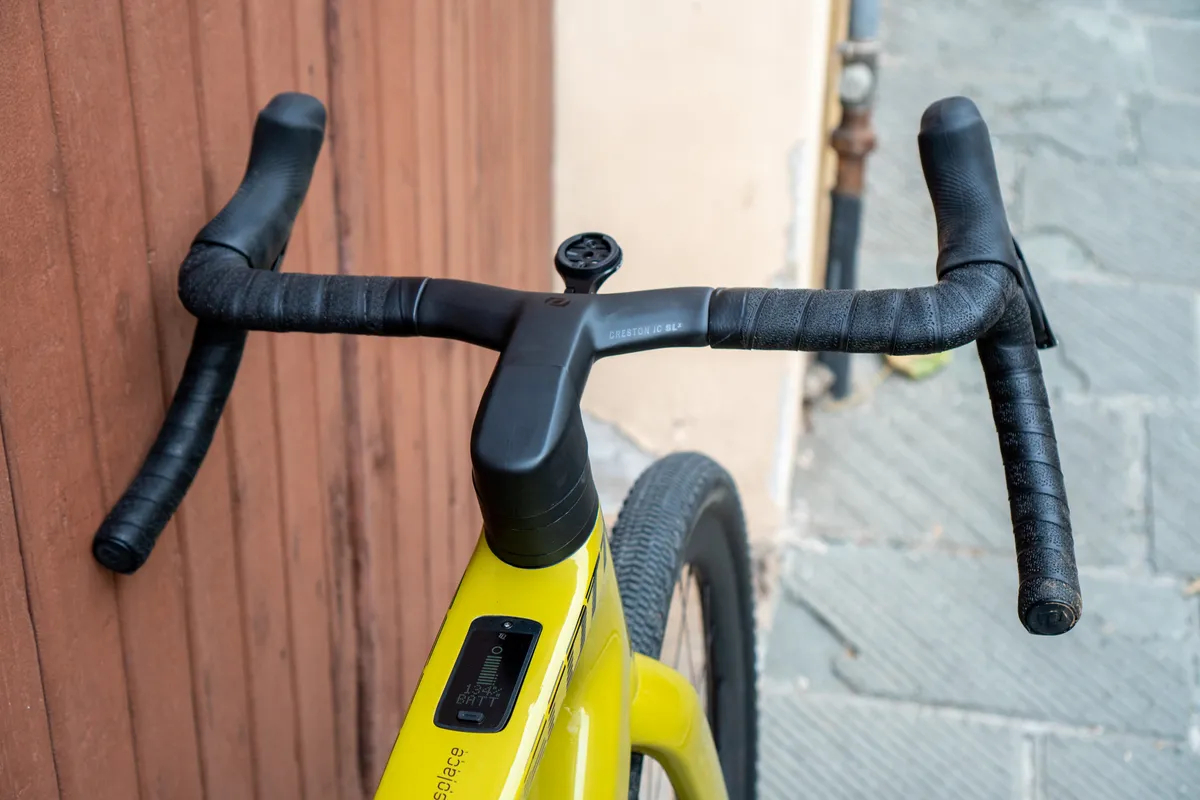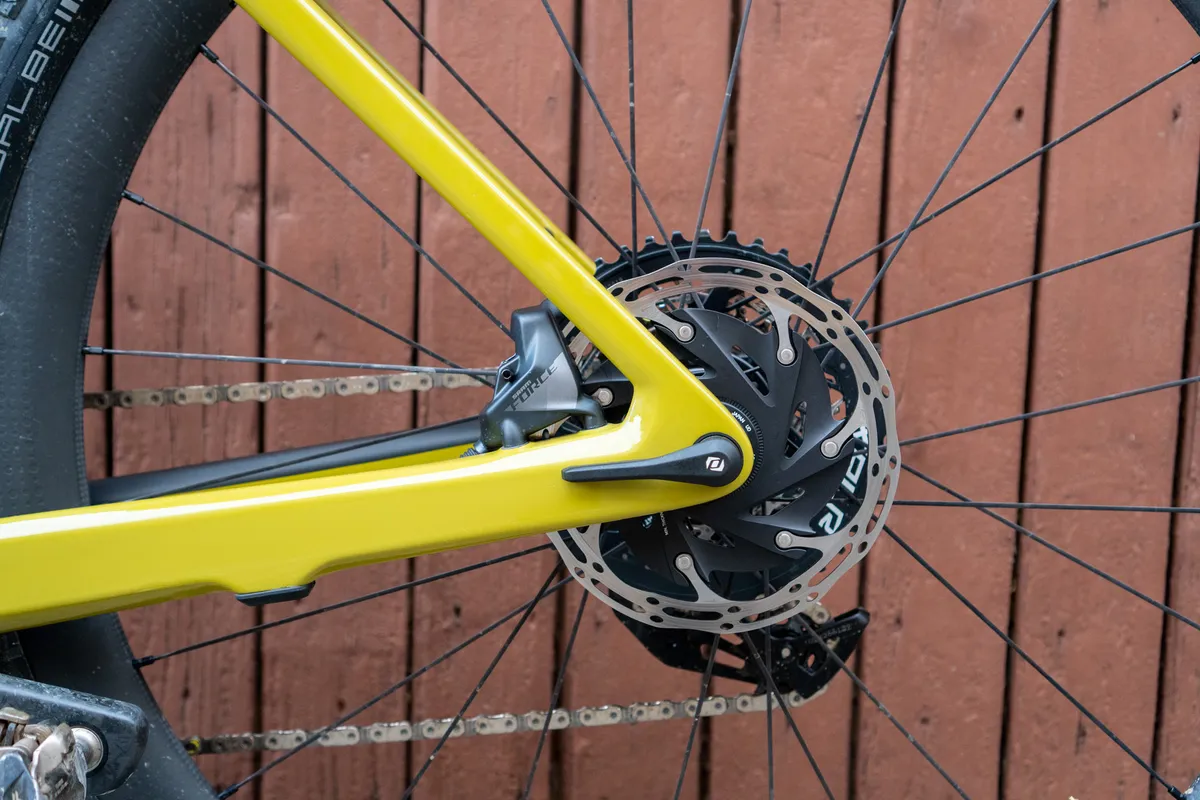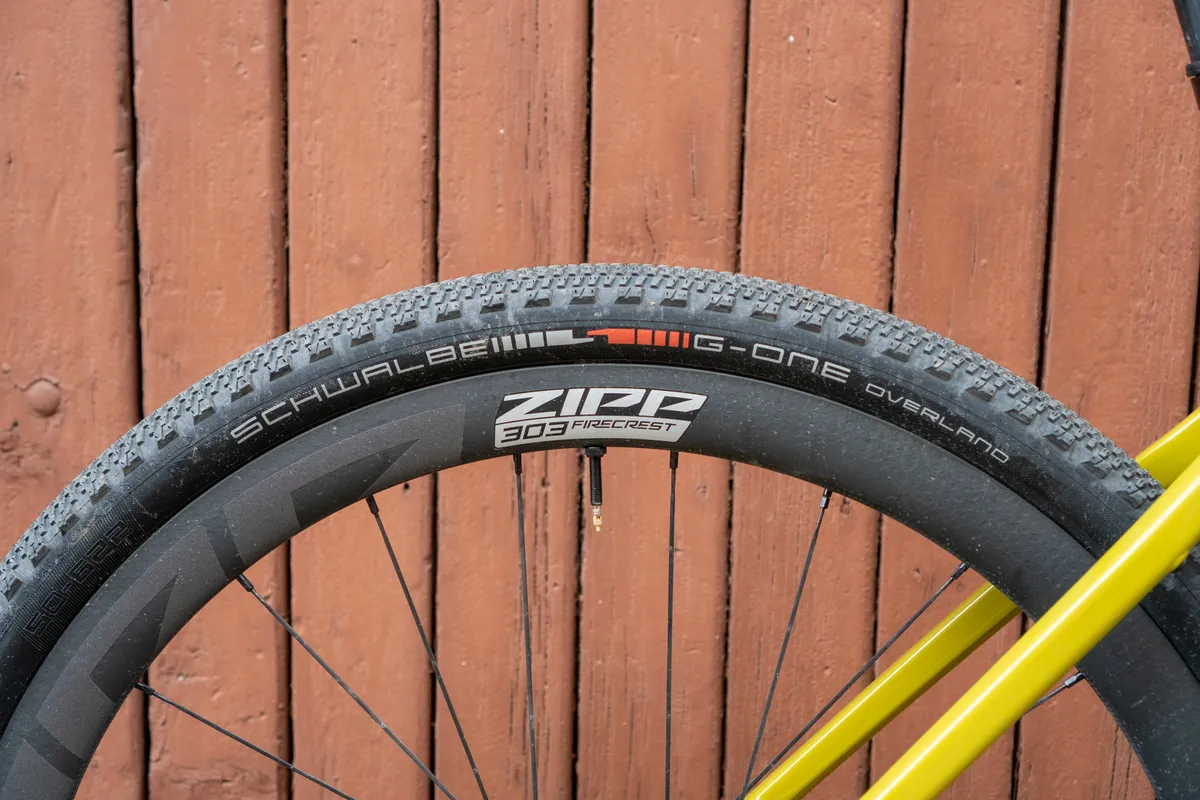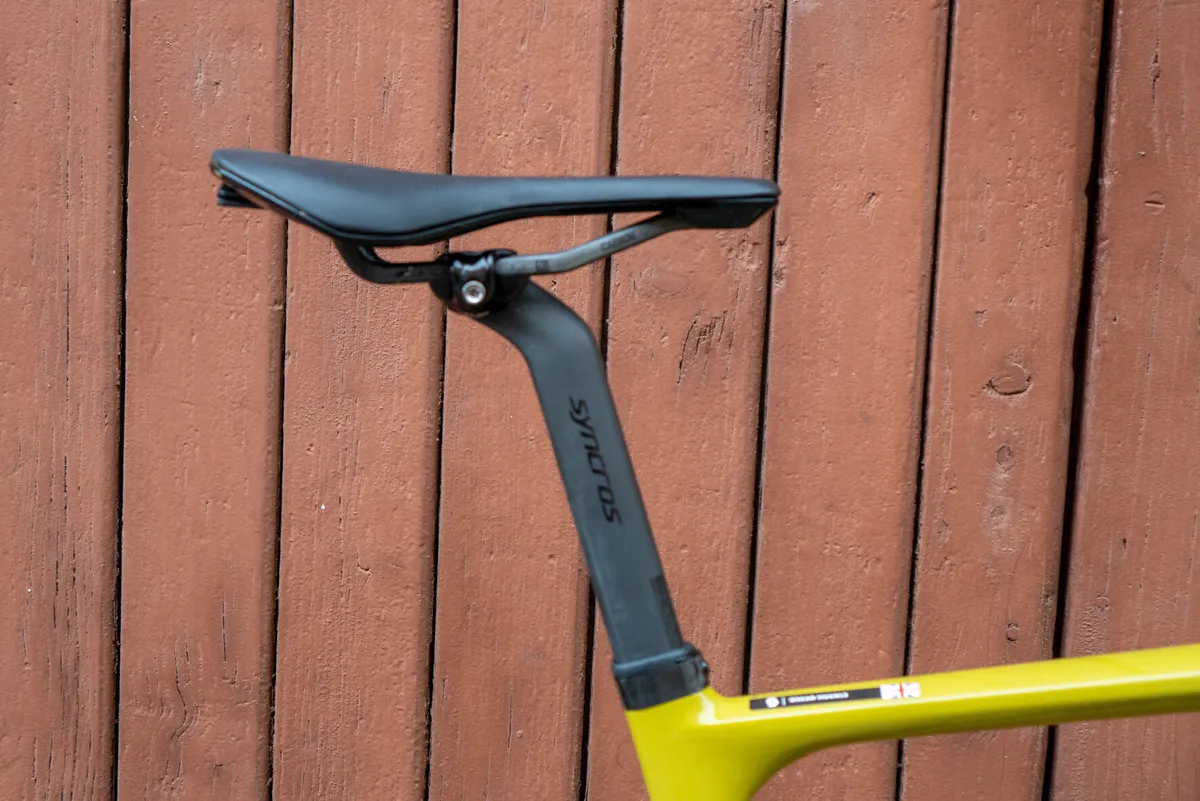Scott has introduced the Solace Gravel eRide, part of the brand’s new drop-bar electric bike range. It’s influenced heavily by the Addict Gravel, with a comparable geometry and aesthetic.
The bike uses TQ’s HPR50 electric bike motor and battery system. It’s claimed to be one of the lightest and quietest systems on the market, as well as feeling more natural to ride than its competitors.
As well as the Solace Gravel, Scott has introduced two road-oriented builds. We also have a first ride review of the Scott Solace eRide 10.
My initial impressions of the Solace Gravel eRide 10 are that there's a lot to like about Scott’s electric gravel bike debut. The frame geometry works well for the majority of gravel riding and the TQ HPR50 system seems to make for a solid pairing.
Scott Solace Gravel eRide highlights
- 1.2kg frame weight in a size medium
- 700c wheels only and up to 50mm tyre clearance
- Mounts for mudguards and a kickstand
- Five sizes available (XS – 49cm through to XL – 58cm)
- 4 builds with SRAM 1x groupsets
- Prices start from £7,299 / $7,999.99 / €7,999
Scott Solace Gravel eRide 10 first impressions
Scott says it has aimed the Solace Gravel at every rider and tried to ensure its appearance resembles a conventional non-assisted gravel bike.
The Solace Gravel is constructed using Scott’s HMX carbon fibre, with a 1.2kg claimed frame weight in a size medium.
The frame can accept up to 50mm gravel bike tyres, or 45mm-wide tyres when using a mudguard.
The Solace Gravel has fully integrated cables and hydraulic hoses. It also makes nods to versatility, with mudguard mounts and provision for a kickstand.
Scott Solace Gravel eRide 10 geometry

The Solace Gravel shares near-identical geometry with the Addict Gravel, with a 1mm increase in stack and a 10mm increase in chainstay length.
Scott claims this better balances the weight distribution of the battery and motor.
| Frame | XS – 49 | S – 52 | M – 54 | L - 56 | XL - 58 |
|---|---|---|---|---|---|
| Head tube angle (degrees) | 69.5 | 70 | 71 | 71 | 71 |
| Seat tube angle (degrees) | 74.5 | 74 | 73.5 | 73 | 73 |
| Top tube length (mm) | 518 | 534 | 554.5 | 578.4 | 592.5 |
| Head tube length (mm) | 85 | 110 | 128 | 154 | 175 |
| Chainstay length (mm) | 435 | 435 | 435 | 435 | 435 |
| Wheelbase (mm) | 1,021.5 | 1,030.1 | 1,036.8 | 1,056.2 | 1,071.1 |
| Reach (mm) | 374 | 378 | 387 | 398 | 406 |
| Stack (mm) | 519.3 | 544.7 | 565.6 | 590.2 | 610 |
Scott Solace Gravel eRide 10 specification

I rode the top-spec Solace Gravel eRide 10, which retails for £9,199 / $10,099.99 / €9,999.
Although a spendy investment, it’s not as pricey as Specialized’s S-Works Turbo Creo SL or Trek’s Domane+ SLR, the latter also using TQ’s HPR50 system.
As you’d rightfully expect, there aren’t many compromises to be found for the asking price.
The Solace Gravel eRide 10 features SRAM’s Force XPLR eTap AXS electronic groupset. The 10-44 tooth cassette is paired with a 42t chainring.
Zipp’s 303 Firecrests are on wheel duty, sporting a 40mm depth, with 30mm external and 25mm internal rim widths. They are shod with Schwalbe’s G-One Overland gravel bike tyres, in a 50mm width.
The finishing kit is all from Scott’s in-house brand Syncros. There’s a Creston iC SLX integrated bar-stem, along with a D-shaped Syncros Duncan SL Aero seatpost and Tofino saddle.
Scott Solace Gravel eRide 10 first ride impressions

This first ride review is based on three days riding around Massa Marittima in Italy. There were two identical 32km gravel rides, with a longer 57km sojourn to the coast sandwiched in between.
I rode a size large, which fitted me perfectly for my 5ft 11in / 180cm height.
The riding included a mixture of road, fire-road climbs, smooth gravel and a healthy dose of singletrack trails to test the bike’s off-road ability.
The conditions were dry and dusty, with some mud thrown in for good measure in the deepest, darkest depths of the woods.
What impressed me most was how the Solace Gravel eRide felt balanced at both ends, with good comfort and suitable stiffness.
Because the geometry is essentially transplanted from the Addict Gravel line (with a 1mm increase in stack and 10mm increase in chainstay length), it’s at the racier end of the gravel bike spectrum. This suited me just fine.
If you want to experiment with the handlebar height, you can do so without having to undo the hydraulic lines, which is handy.

However, unless you cut the steerer accordingly, you’ll need to run a conventional round headset spacer above the bar-stem and omit the plastic magnetic cap that neatly covers the stem hardware.
The 10mm longer chainstay length is a winning move, affording the bike a more stable quality without being overly long to the point of feeling sluggish.
The Solace Gravel handles beautifully. Its neutral steering enables you to carve your way round corners with pinpoint precision, and it’ll obligingly let you make a quick adjustment to your line if you need to.
TQ HPR50 motor and battery

TQ’s HPR50 motor and battery system is a promising proposition.
The assistance is delivered deftly and the bike proved particularly fun to ride in undulating terrain, such as when I needed to get up a short, sharp incline quickly after some spicy singletrack.
I turned the assistance off or stuck to the Eco setting for the most part of the first ride. The bike felt very similar to a non-assisted gravel bike.
The extra weight of the assistance system isn’t particularly noticeable, being centred around the down tube and bottom bracket area of the bike.
What is noticeable is some resistance as you pedal. I didn’t notice this so much when I rode the similarly equipped Scott Lumen – likely down to the higher, more consistent speeds I was riding on gravel and road.
After the first 32km ride, taking in 450m of elevation, I had 48 per cent battery life left from a full battery charge.
For the second and third rides, Scott mounted TQ’s 160wH range extender to the bike. It mounts to one of the bottle cages, and I didn’t find the extra 950g weight noticeable.
Scott has arguably missed a trick in not building in a third bottle cage mount. I’d likely need to carry a hydration pack if I was heading out on a long ride and forfeited one of the water bottles for the range extender.

Having to reach for the top tube display button to change modes was also irritating.
On the one hand, it negates the need for a handlebar remote, resulting in a cleaner front end.
That said, I would have been more comfortable riding on undulating trails if I didn’t have to take one arm off the shifter to press the display button while concentrating on the trail at the same time.
The up-down format of changing through the motor modes could also do with further refinement.
For example, if I was in the Eco mode and wanted to switch the motor off (having previously had the motor system switched off) I’d have to cycle up through the Mid and High modes before going back down through all the modes again. That’s five clicks to change one mode.
I’m told TQ is working with Shimano and SRAM to integrate changing the motor mode via the shifter, but the timeline is unclear.
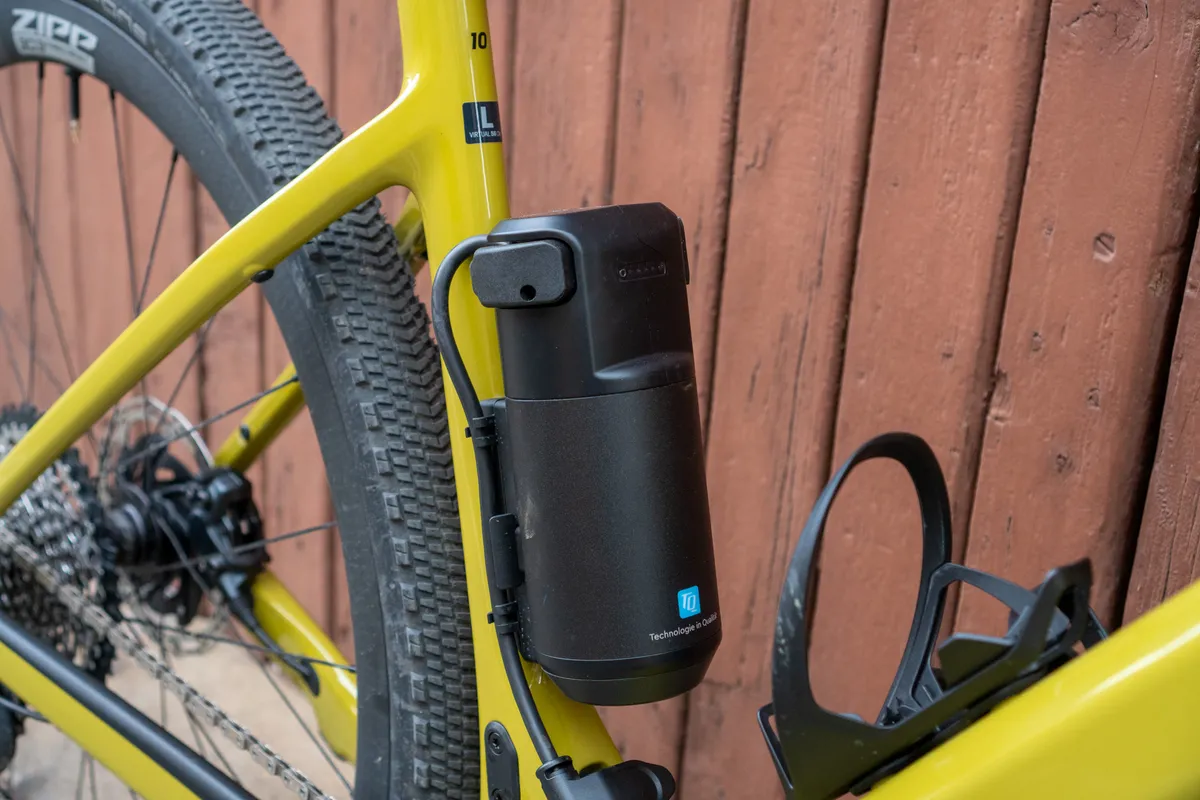
The longer ride to the coast involved a 10km section on the road, where the limitations of an electric gravel bike became apparent, because I was riding just at the motor cut-off point.
There is a 10 per cent leeway between the mandated 15.5mph / 24.8kph limit and the motor cutting off fully, with TQ saying the motor will shut off completely at around 26kph.
This meant I either needed to slow down to benefit from the electric assistance or pedal harder to get above the 26kph limit to stop feeling any resistance from the motor.
The final ride saw the sprightly Scott mechanics join us with fresh legs, which resulted in a punchy pace.
The Solace Gravel won me over on this largely singletrack-based ride. The TQ system proved very reactive at delivering its assistance when challenged with regular bouts of slowing down and speeding up on trail obstacles.
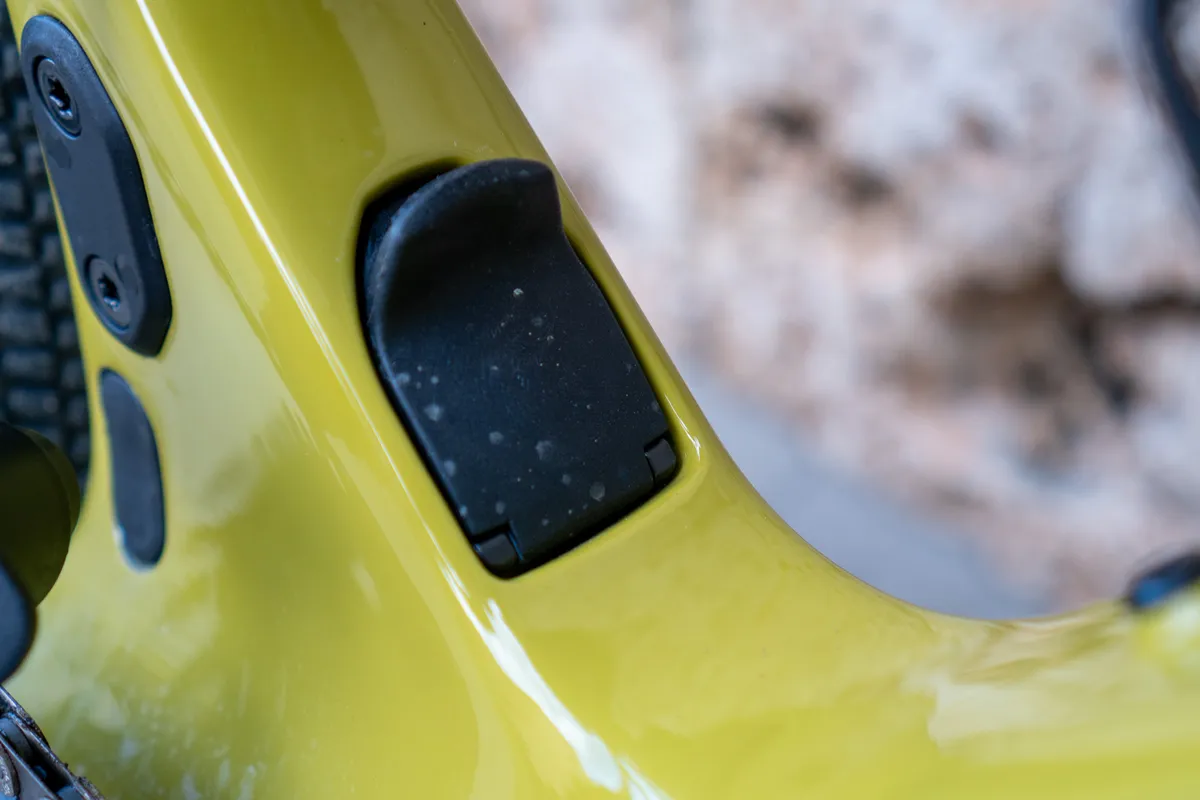
I also experienced some rattling from the TQ display wires located in the top of the top tube on the first ride. This was mostly remedied with some cable ties, but on bigger hits on the second and third day, there was still some mild rattling.
Unlike on the Lumen, where Scott set the pedal response rate (when and how the motor kicks in) to zero in every setting, the brand has made some changes to the Solace.
Jonathan Fazan, Scott’s product manager says, by default, the Eco mode is set to approximately 15 per cent, the Mid mode to 50 per cent and the High mode 85 to 90 per cent.
I felt these modes to be perfectly judged and couldn’t detect any lag with the motor delivering its assistance in any of the modes.
Build impressions
SRAM Force XPLR eTap AXS performed brilliantly, with helpfully distinct clicks from the shift buttons, comfortable levers and faultless braking performance.
Scott says the specced 42t chainring is the best choice for the majority of riders, but I’m not convinced (yet). You’re going to be limited pedalling at top-end speeds with the motor limit, so I’d wager a smaller chainring would be of greater benefit for climbing.
The Zipp 303 Firecrest wheelset was a fitting choice for the build. I recently tested a Berria Belador Allroad that came with Zipp’s 303S wheelset and found it offered a stiff and uncompromising ride.
The 303 Firecrest has a 2.3mm wider internal rim width than the 303S, which in combination with the 50mm tyres helps to improve comfort.
I was impressed by Schwalbe’s G-One Overland tyres. They’re brilliant on virtually all off-road terrain, with plenty of grip and traction. I found them to perform respectably even on mud, which they’re not technically designed for.
As for the finishing kit, I really got on with the 42cm handlebar and 100mm stem length on the integrated Creston iC SL X bar-stem, as well as the compact shape and 16-degree flare.
I found the plastic stem cover rather finicky to prise open and refit neatly. That said, once open I could access the stem bolts with ease.
The own-branded bar tape was comfortable and grippy, a kind of hybrid of Lizard Skins’ DSP and Fizik’s thinner offerings.
Scott Solace Gravel eRide 10 bottom line

My early impressions suggest Scott has mostly achieved its goal of creating an electric gravel bike that rides (almost) like a non-assisted one.
The geometry is well-judged and it has plenty of versatility to boot.
TQ’s HPR50 system migrates to gravel mostly seamlessly, although first indications are the ride experience will be greatly improved once you can change between modes more easily using the shifter buttons.
It will be interesting to see how the battery life fares on longer gravel escapades.
I’m looking forward to seeing how the Solace Gravel performs on familiar UK terrain soon.
Product
| Brand | scott |
| Price | 9999.00 EUR,9199.00 GBP,10099.99 USD |
Features
| Fork | Solace Gravel eRide HMX, Flat mount disc, 1 1/4in - 1 1/2in eccentric carbon steerer |
| br_stem | Syncros Creston iC SL X |
| br_chain | SRAM Force |
| br_frame | Solace Gravel eRide Disc HMX, Endurance geometry |
| br_motor | TQ HPR50 |
| Tyres | Schwalbe G-One Overland, 700c x 50mm |
| br_brakes | SRAM Force |
| br_cranks | FSA eBike Carbon |
| br_saddle | Syncros Tofino Regular 1.0 Cutout |
| br_wheels | Zipp 303 Firecrest |
| br_headset | Acros AIF-1135 |
| br_shifter | SRAM Force eTap AXS, 12-speed |
| br_cassette | SRAM XPLR XG1251, 10-44 |
| br_seatpost | Syncros Duncan SL Aero |
| br_handlebar | Syncros Creston iC SL X |
| br_availableSizes | XS49, S52, M54, L56, XL58 |
| br_rearDerailleur | SRAM Force XPLR eTap AXS |



